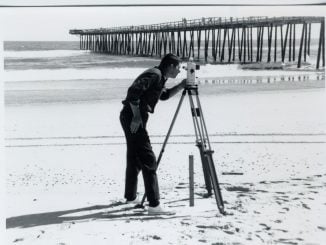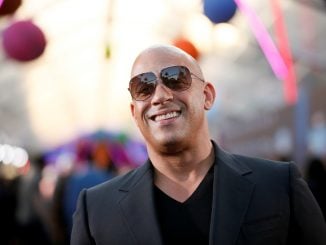Twenty years ago, the Charlotte Ballet was in bad shape. It was only five years old, and the artistic director had just died. Its survival depended on the next director, a visionary who could convince the people of Charlotte to care about ballet.”I was crazy enough to say, ‘You know, that sounds exciting. We’re going to save that company,'” said Jean-Pierre Bonnefoux, the current artistic director of the Charlotte Ballet.Bonnefoux, born in France, and his wife, Patricia McBride, from New Jersey, moved to Charlotte in 1996 to save the Charlotte Ballet. When Bonnefoux assumed the role of artistic director his wife came on as the associate artistic director.”We chose Charlotte because it was very dynamic, a small city, but very ambitious, also,” he said.His greatest challenge was that there was no established ballet culture in Charlotte. Bonnefoux added, “I didn’t realize how hard it would be.”At the time, many people didn’t think of ballet as a profession. When he told someone he was the artistic director of a ballet company they would often ask what else he did.More than just his career, ballet has been his life. He first joined the Paris Opera Ballet when he was 14 years old and rose to the highest ranks of the company when he was only 21. In 1970, at 27, he became a principal dancer at the New York City Ballet.One summer, he and his wife, also a dancer for the NYCB, were invited to perform at Chautauqua Institution in upstate New York. While it is now known for its professional musicians, artists, singers, actors, and dancers and offering summer intensives, in the 1970s there was no official dance program. When Bonnefoux was asked to work as the artistic director in 1983 in order to build a new ballet summer program he wanted to do something different. At the time, many summer intensives had class sizes of 50 or more students and they were all solely focused on being instructional.”I wanted a small group of dancers,” Bonnefoux said. “That was very important to me because I feel that if there are more than 20 in a group, you don’t get enough attention from the teacher.”Besides creating an unconventionally small program, Bonnefoux also revolutionized the definition of the typical summer intensive by incorporating his students in performances for an audience.”The mentality at the time was that, in the summer, you don’t have enough time to give them classes plus rehearsals, and the dancers cannot learn enough and cannot be good enough to be seen on stage,” Bonnefoux said.”Many teachers worry that if they show their students after just a few weeks of work, they will not look good, and they, the teachers and their school, will not look good,” he said. “But I didn’t mind at all because I felt that dancers are really bright, and they can really learn fast.”Now, it’s standard practice that summer ballet intensives include performances, in part due to his influence on the industry.His vision for the Charlotte Ballet was similar to his thoughts for the Chautauqua Summer Intensivehe wanted it to be small but powerful. He found further inspiration from Ballets U.S.A. With his prior experience at the Paris Opera Ballet, which consists of almost 150 dancers, Bonnefoux had never seen a company as small as Ballets U.S.A’s 20 dancer company.”Each of them was an interesting dancer, with their own way of moving,” said Bonnefoux. “I wanted a place where there was no corps de ballet.”When he came to Charlotte, he said there was no tradition of dance. Since 1996, Bonnefoux has fortified the Charlotte Ballet as a company of 25 members that performs an annual season of five performance series. During the off-season in the summer the dancers join Bonnefoux back in Chautauqua as the company in residence. The Charlotte Ballet was recognized for its progress in 1999 when the Arts & Science Council awarded the company the “Advancement of Excellence Grant.” In 2000 Bonnefoux created a second ballet company called Charlotte Ballet II. Then in 2010, the company was one of nine selected to perform at the Kennedy Center’s Ballet Across America in Washington, D.C.”Things have changed, but it has been slow,” he said. The Charlotte Ballet still can’t afford to perform with the symphony, which is a luxury of larger companies like the Paris Opera Ballet and NYCB. Despite these challenges, Bonnefoux still sees more opportunity for dance in the city. He plans to step down as the artistic director in June 2017 to pursue a new dance opportunity.”I’m 73, and so I thought that I still have time to have another phase in my life,” said Bonnefoux. “And, I guess if you’re optimistic about things like that, then age doesn’t matter that much.”Bonnefoux hopes to use the next phase of his life to organize workshops for classical ballet dancers to be trained in contemporary ballet, targeting students from less established dance schools because they often don’t have the resources to educate on contemporary ballet. He wants to equip these dancers with the skills needed for a better chance at landing a job as a professional dancer.”Not that long ago, classical was just enough,” Bonnefoux said. “Now it’s not. And contemporary is going to get even more important.”The workshops will be held in Charlotte but attract dancers, ages 15 to 19, from all over the country. Like his program in Chautauqua and also the Charlotte Ballet, he wants the workshop to remain small and intentional.”I love the idea of being a scout and finding talent, discovering talent. That’s my thing,” says Bonnefoux. “I have a reputation, I think, I hope, that I care about the dancers.”
© 2022 — North State Media LLC



